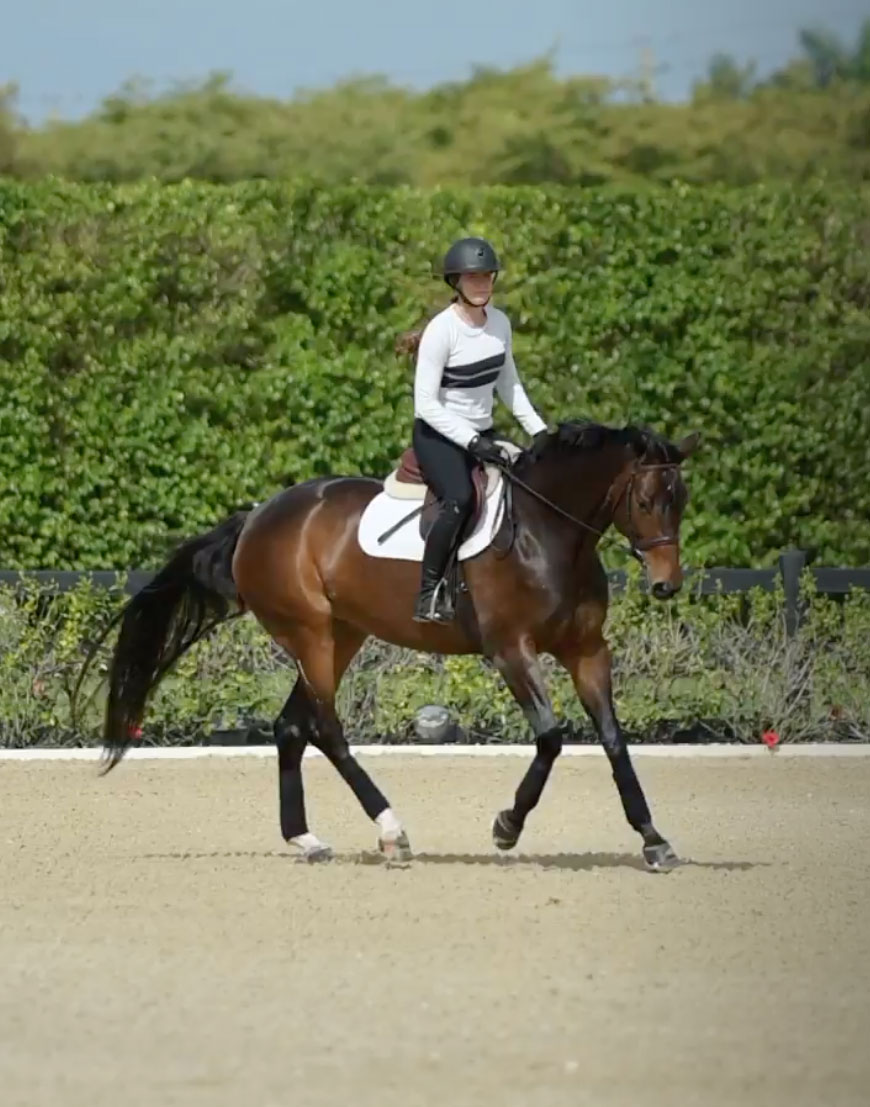
Lead changes can be difficult, and getting a smooth flying change is often a challenge for many horses and riders. Every horse and rider is different, but there are a few things I like to think about for executing a smooth flying lead change.
Why are changes so complex? Because it’s all about timing and balance!
Whenever I am riding a new horse, I like to start out by practicing simple changes (lead changes with a downward transition) to mimic a flying change. I do this by going down to the trot or even the walk and waiting until the horse feels balanced before I pick up the new lead. This helps me get familiar with the horse’s rhythm and balance, and the horse can begin to understand what I am asking.
Next, here are the aids I give in order to execute a flying change correctly:
1. I use the natural diagonal track that doesn’t confuse the horse.
2. As I am going across the diagonal, I take my current outside leg to hold the lead and push the horse over toward the rail.
3. As I approach the rail, I shift my weight to the new outside leg and new inside rein as if I was asking for the canter.
Finally, practice! Not every change is going to be perfect. Practice your timing and try feeling the balance before you ask for the best type of change! Good luck & I hope these tips help you & your horse nail the perfect flying change.